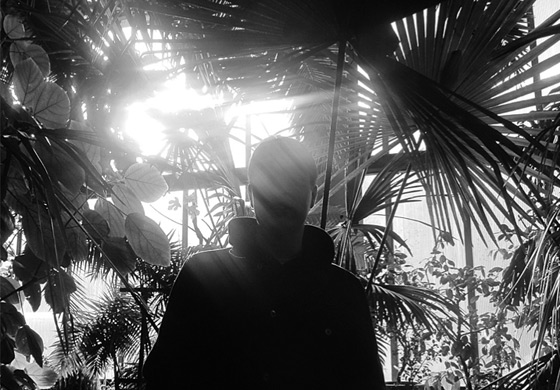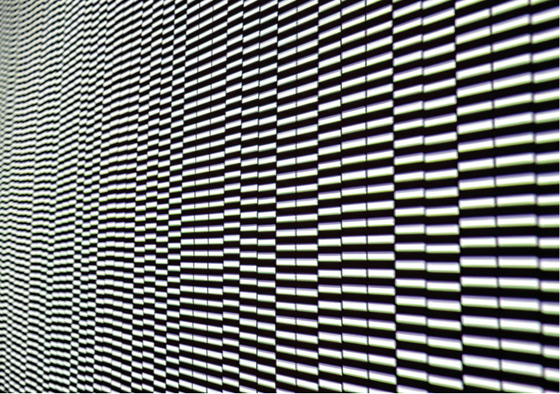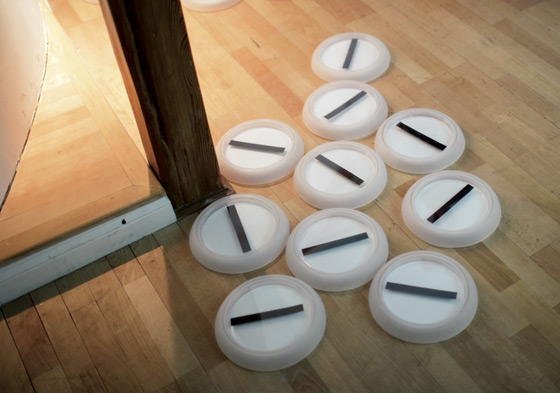|
|
| Playing outside of the field Jānis Borgs, Art Critic Review of Mārtiņš Roķis’ 2+2=5 exhibition at the Latvian Centre for Contemporary Art Office Gallery 22.01.–28.02.2014. | |
| Each time i visit the latvian centre for contemporary Art’s (lccA) Office Gallery, i remember the window sill in my office. i placed some little pots there some time ago with long suffering sickly little plants. A miracle happened. they literally exploded in a botanically stormy ecstasy. massive baseball bats began to sprout from a little cactus; the meaty leaves of an aloe plant transformed into a huge jungle fan; a “Queen of the Night” which had been sleeping for years now shot up to the ceiling and held unbelievably gorgeous flower fireworks shows many times a year. this all took place without conscious effort, special fertiliser or watering regimens. the only explanation is the electromagnetic waves of the tram line’s overhead wires a few metres away outside the window, energetically beaming through everything. in a similar way to what was taking place on my window sill, here too, in the lccA’s pocket gallery, the “sprouts” of creative thought from a variety of artistic personalities, specially selected from among those who have something avant-garde, experimental or are associated with further artistic development, were occurring through the revelations at exhibitions. there’s a kind of testing range here with just the kind of artistic radiation required and all sorts of other beams, which at times promote and spark the scintilla of magnificence, as well as that powerful rush of blood and blast of sensations that occur after a swig of pure spirits during freezing weather. This time, that sort of feast of special quality took place with master Mārtiņš Roķis and his 2+2=5 exposition. the author of the commentary wisely pointed out that “in the political context, 2+2=5 is a formula for falsehood, when obvious truths are denied in the name of ideology”. “And not only that,” it should be added. that’s what the usual everyday practice is in almost every area of people’s lives. Untruths as a form of defence and refuge? lies as a guarantee of vitality? in addition, it suddenly transpired that Roķis’ conceptual formulation has even turned out to be quite prophetic. in the background, as the exhibition concluded, the world media began to rousingly swell with news of the Russian führer’s paranoid “crimean performance”, uniquely padded in a thick layer of lies. in this case you could say that “2+2=55”! | |
 Mārtiņš Roķis. 2014 Photo from the private archive of Mārtiņš Roķis | |
| But in this exposition, Roķis, in acknowledging the everyday realism of his “formula for falsehood” in the “harshness of daily life”, still rose to astral heights and developed a completely different trend in a quite exact intellectual plane. it was a completely de-literalised and de-ideologised world of pure form, sound and movement. An environment in which the person–observer floated like a sponge of open perception. the uplift, like in a heavenly reality of abstraction, led us into a borderline zone of science and art. the mathematical clarity, laconicism and technicality of the objects created by Roķis hypnotised with a kind of barely perceptible presence of mystery. like an evanescent aroma.... “falsehood” here was “truth”, because the tangible physical elements organised within the artist’s compositions made one clearly sense the presence of some other dimension. that’s why these “falsehoods” are not lies but small revelations onto the infinite mystery and diversity of the great reality. like looking through a keyhole – there’s another world on the other side. And more, and more, and more.... And here and now, too, alongside us, around us and inside us, there’s something else as well. As happens at chamber exhibitions, only about five or six objects, which blended into a single whole during their observation, were shown at the lccA gallery. And, as befits something associated with art, a few aesthetic evaluations seem called for. flourishing the customary standards, one could, for example, mention minimalism. But in this case, this would only be a reference to the way the artefacts are structured at some basic level. Beauty, about which one should speak in contemplations of the arts, emanated here not so much from the artist’s own conscious will but, rather, a priori and was inherent in the objects themselves, before any kind of conscious experience. for example, a circle is a beautiful, ideal and absolute form, independent of any artist’s will or talent. it is a piece of objective beauty, like the elegance of a mathematical formula or the magical order of multiplication tables. Cool elegance and tension radiated from each 2+2=5 exhibit. for example, the large plane on which the illusory vibration of graphic micro-elements reminded one of the operation of a computer monitor or a tv screen on standby. A fine pattern was visually perceived, similar to the texture of knitwear. it’s here – we are aware of the static nature of the image, but its active “shimmering” in the eyes, against the protestation of the mind, reveals a different truth, which isn’t really there, because 2+2=5. And here, the focused exclusion of subjectivism guaranteed the revelation of absolute form and the perfection of the concept. | |
 Mārtiņš Roķis. View from the exhibition 2+2=5. 2014 Photo: Andrejs Strokins Publicity photo Courtesy of the artist and Latvian Centre for Contemporary Art | |
| A hypnotic group of “clocks” existed alongside this on the floor, where lonely clock hands circulated in perceived circles on blind “clock faces” within black frames, each in its own independent way but in a unified rhythm. like a robot army. like time bombs. perhaps we can also find some kind of metaphor here, an allusion to knowledge about the relativity of time. even though, again, such banality emerges in a much too simplified way, only from a literary reading of the forms of the objects. But “the truth is somewhere out there”. there’s also “time” there, too, but more likely the process. Rhythm.... the confirmation of some universal and non-biological consciousness. And then came the installation in a mirrored square. An illusory well of light opens up in the floor of the box, where strings of glittering points entice one’s eyesight into the magic depths and also reveal some other “spatial” reality, a place “beyond the looking glass”. or, almost next to it, the “mirrored corner” with an acoustic spider-like device hanging in it, calling to mind constructivist corner sculptures. And alongside, there are three “maleviches” on the wall as well – three coloured rectangles. White, red, blue – something like a mondrianic composition. An atmosphere of “extra-terrestrial” mystery was raised by a pulsating, changing and technogenic sound within the space and near the object, a fascinating and alarming indicator of the presence of some other existence. the seemingly dead is alive. And the sound, specifically, seemed like the unifying dominant of the entire exposition. it is significant that in this way – in movement through the perception of an uninterrupted and unified visual and audio process – in a sentient way, we acquire something greater, a different additional value. this is evidence of a multi-real environment. “they” have been here, but they have just gone out somewhere and are observing us from behind some corner, but meanwhile machines tick and flicker and something continually rolls on and happens.... however, such visions of fantasy are based on the work of a fairly cool mind, where conceptual strategies have come about in the master’s consciousness for the generation of sounds with various content, with an amplitude ranging from psychedelic to computer music compositions. It should be remembered that Roķis is a self-made audio-visual programming specialist. As shown in the annotation to the exhibition, “the author works with sound in a variety of contexts and forms, appearing at experimental music concerts, creating installations and compositions for multi-channel systems. (..) his works have been shown or have been played in both latvia (at the Rīga Bourse Art museum, the Rixc centre for New media culture at Spīķeri, the “Skaņu mežs” festival and elsewhere) as well as at sound art centres like sTeIM in the Netherlands, eMs and Fylkingen in Sweden, the Audiorama concert hall in Stockholm, Cafe OTO in london, the nextsound festival in Ukraine and the sound Around Kaliningrad festival in Russia (..).” plus a dozen other international presentations, where Roķis has filled the role of latvian guest-composer with aplomb, as well as his activity on the radio waves and in his Dj work. the breadth of his personality is also impressively revealed in a string of composition recordings and albums, which are full of captivating “clouds of sound”. Roķis is well described by Rihards Bražinskis: “(..) the extreme diversity of computer music in its full amplitude, including rhythmic and quasi-melodic turns as well. for some time now, Roķis has taken on his own full-blooded course and done this very well, being reserved, aesthetically pure and stable and offering a massive and good sound.” | |
 Mārtiņš Roķis. View from the exhibition 2+2=5. 2014 Photo: Andrejs Strokins Publicity photo Courtesy of the artist and Latvian Centre for Contemporary Art | |
| let us note that the term “artist” is used more rarely in relation to Roķis; the perhaps neutral term “author” is used more often. But, it seems that one could also use the descriptions “operator”, “conductor” and “designer”.... Roķis is not a traditional “creator of beauty”. he sorts and organises primary elements that have been raised to the status of artefacts, because Roķis does not have this seemingly compulsory education in either the academies of music or art and not even from special schools and colleges. however, he has studied philosophy at the University of latvia’s faculty of history and philosophy. perhaps this was specifically the place where such a discipline of the mind was trained, a discipline that could be envied by many exponents of the fine arts. in every respect, we are now talking specifically and quite respectfully about such a “non-artist’s” works in a serious art magazine. this once again reminds us of the often forgotten truth about the absolute priority of thinking in any kind of artistic processes. All of the rest might just be a polishing of form through academic education, which, of course, is no less important but not the determinant. for Roķis, thinking is a primary value. With his intelligence, talent and differently trained discipline of the mind he has been able to enter the field of the art game from the other – the non-traditional and unofficial – side. And he has known how to expand this game broadly, outside the customary range of theory. Bringing it out into the wider world.... Translator into English: Uldis Brūns | |
| go back | |







